Choosing the correct flow coefficient is vital for optimizing valve performance across various systems. The KV value, an essential metric for measuring flow rates, ensures precise valve selection in applications ranging from a ball valve or gate valve to advanced systems like pneumatic valves and electric valves. Understanding KV’s role is particularly crucial when specifying options like a butterfly valve or flanged ball valve, where efficiency and control can significantly impact operational outcomes. This guide explores how to leverage the KV value for accurate valve sizing and enhanced system performance.
Introduction KV Value
The KV value is a critical metric for determining the flow rate through a valve, ensuring accurate sizing and optimal system performance. Whether you’re working with a pneumatic ball valve, 3 way ball valve, or electric ball valve, understanding KV is key to achieving efficiency and precision. This metric also plays a vital role in selecting valves like a globe valve or pneumatic control valve, helping to meet demanding application requirements with unmatched reliability.
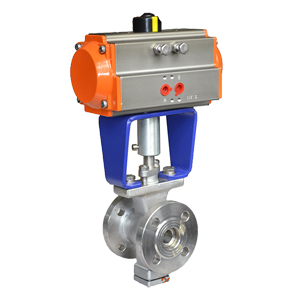
Overview of the importance of accurate flow coefficient metrics in valve applications.
The KV value, or flow coefficient, is a critical metric in valve applications that quantifies the flow rate through a valve under specific conditions. Accurate KV values enable precise sizing and selection of valves, ensuring compatibility with system requirements and operational parameters. Miscalculated flow coefficients can result in inefficiencies, pressure loss, or system failures. Consistent measurement of KV value supports system design, enhances process control, and maintains compliance with industry standards.
Brief explanation of CV and KV values and their roles in valve performance and efficiency.
CV and KV values represent flow coefficients used to quantify fluid flow through valves under specific conditions. CV is the flow rate in gallons per minute at a one-pound pressure drop, primarily used in imperial units, while KV measures the flow rate in cubic meters per hour at a one-bar pressure drop, common in metric systems. These values guide valve sizing and selection, aligning performance with system requirements to optimize flow control and maintain operational efficiency.
Importance of selecting the correct metric to match diverse valve types, such as pneumatic and electric valve systems.
Matching the correct metric to valve types, including pneumatic and electric valve systems, ensures proper functionality and system compatibility. Different valve types operate under varying conditions, making metrics like KV and CV crucial for accurate sizing and selection. Using the correct metrics supports efficient flow control, reduces the risk of operational issues, and aligns with system demands.
Understanding CV and KV Values
What is a CV value? Breaking down its definition and application in valve sizing (e.g., ball valve, gate valve).
CV value measures the flow rate of water in gallons per minute through a valve at a one-pound pressure drop. It is used to determine the capacity of a valve to handle specific flow requirements. For ball valves and gate valves, CV values guide the sizing process, helping to match valve capabilities with system needs to maintain consistent flow and prevent pressure-related issues.
Ball valve
Ball valves are commonly used in applications requiring reliable control of fluid flow. They feature a spherical element with a hole that aligns with the pipe to allow flow or rotates to block it. The CV value of a ball valve determines its capacity to handle a specific flow rate at a defined pressure drop. This metric is essential for sizing the valve correctly to meet the system’s flow and pressure requirements.
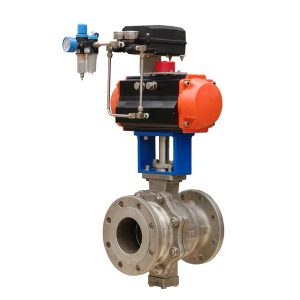
Gate valve
Gate valves are designed to control fluid flow by raising or lowering a gate inside the valve body. They are used in applications requiring full flow or complete shut-off. The CV value of a gate valve indicates its ability to handle a specific flow rate at a defined pressure drop, aiding in the correct sizing of the valve to match flow and pressure conditions in the system.
The KV value explained: Relevance in international contexts and its equivalence to CV.
KV value measures the flow rate of water in cubic meters per hour with a one-bar pressure drop, commonly used in metric systems. It serves as an international equivalent to the CV value, which measures flow in gallons per minute with a one-pound pressure drop. Understanding the relationship between KV and CV allows for accurate valve sizing and system design across regions with differing measurement standards.
Why differentiating between CV and KV is critical when selecting valves (e.g., butterfly valve or globe valve systems).
Differentiating between CV and KV is essential for ensuring proper valve selection in systems like butterfly or globe valves. CV and KV measure flow rates under specific pressure drops, with CV using imperial units and KV using metric units. Recognizing the distinction helps ensure accurate sizing and compatibility with regional measurement standards, preventing inefficiencies or mismatches in flow and pressure performance.
Butterfly valve
Butterfly valves regulate fluid flow through a rotating disc positioned inside the valve body. Their design allows for flow control or shut-off. When selecting a butterfly valve, understanding CV and KV values is critical to ensure proper sizing and compatibility with the system’s flow requirements and regional measurement standards. These values help assess flow rate capabilities under defined pressure conditions.
Globe valve
Globe valves control fluid flow by moving a disc or plug against the flow, creating variable resistance. They are used in applications requiring throttling or pressure control. Differentiating between CV and KV values is essential for proper selection, as these metrics define flow rate capabilities under specified pressure conditions. Understanding the distinction ensures accurate sizing and compliance with measurement standards in different regions.
Deciphering Your Application’s Needs
Flow capacity considerations for industrial and commercial operations.
Flow capacity is a critical factor in industrial and commercial operations, as it determines the ability of a system to handle required flow rates under specific conditions. Understanding flow capacity ensures efficient system performance by matching the valve’s sizing and selection with operational demands. Proper evaluation of flow requirements, including pressure and media characteristics, supports system efficiency and reliability.

KV value significance for selecting precise options like flanged ball valve or 3 way ball valve systems in complex setups.
KV value quantifies the flow rate under a one-bar pressure drop, making it essential for selecting valves in complex setups like flanged ball or 3-way ball valve systems. It helps evaluate the system’s flow dynamics, ensuring proper valve sizing and integration with operational requirements. Accurate use of KV supports compatibility and efficient performance in systems with intricate flow conditions.
When to prioritize KV over CV based on operational standards.
Prioritizing KV over CV is necessary when the operational standards align with metric measurement systems, as KV is defined using metric units. This is common in regions or industries that mandate metric compliance. Using KV ensures consistent flow rate calculations and valve sizing under these standards, aligning with system requirements and maintaining accuracy in pressure and flow performance evaluations.
Choosing the Right Valve Type with KV Value in Mind
Matching valve types to applications, including pneumatic valve and pneumatic ball valve suitability for automated systems.
Matching valve types to specific applications requires aligning operational demands with system capabilities. Pneumatic valves and pneumatic ball valves are effective for automated systems, as they provide precise flow control and integrate with control mechanisms. By incorporating KV values, these valves can be properly selected to ensure efficiency and compatibility within automated operations, meeting flow requirements and pressure criteria.
Why KV value is key for selecting electric valve and electric ball valve models in power-critical settings.
KV value is crucial for selecting electric valve and electric ball valve models in power-critical settings because it determines the flow rate under a fixed pressure drop. This allows for proper valve sizing that meets flow and pressure conditions, ensuring compatibility with the system’s demands. Using KV ensures precise control and efficient operation, which is vital in settings where power and flow parameters must be closely managed.
Exploring KV impacts on butterfly valve and globe valve performance and control.
KV impacts the performance and control of butterfly valves and globe valves by quantifying the flow rate under a specific pressure drop. This measurement assists in determining proper valve sizing and evaluating how each valve type responds to system demands. For butterfly valves, KV helps assess flow capacity over large openings, while for globe valves, it supports precise flow regulation. Accurate KV calculations ensure both valve types function efficiently within operational parameters.
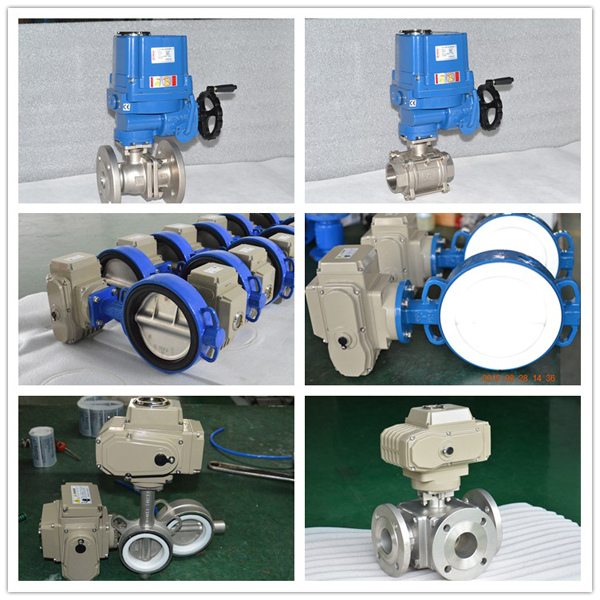
Optimizing for Control and Efficiency
How KV value plays a role in ensuring efficiency with pneumatic control valve systems.
KV value determines the flow rate under a specific pressure drop, making it integral to pneumatic control valve systems. It ensures accurate valve sizing and alignment with system flow criteria, helping maintain effective operation and proper control. By applying KV in the selection process, systems achieve consistent performance and meet required flow and pressure conditions efficiently.
Streamlining operations with accurate KV-calibrated valves, from flanged ball valves to 3 way ball valves.
Accurate KV-calibrated valves, including flanged ball valves and 3 way ball valves, support streamlined operations by providing reliable flow rate calculations under specified pressure drops. This ensures proper valve selection and system compatibility, optimizing flow control and meeting operational requirements effectively.
Case study examples where valve performance optimization hinged on proper KV considerations.
Proper KV considerations have been pivotal in case studies for optimizing valve performance. For instance, in industrial cooling systems, accurate KV measurements ensured correct valve sizing, achieving reliable flow rates under specific pressure drops. Similarly, in chemical processing plants, KV-guided valve selection improved flow regulation, minimizing system inefficiencies and maintaining stable operating conditions. These examples highlight how KV plays a fundamental role in aligning valve capabilities with system requirements.
Global Standards and the Role of KV in Valve Design
Adapting valve solutions, like pneumatic and electric valve systems, for international KV standards.
Adapting valve solutions, such as pneumatic and electric valve systems, to align with international KV standards ensures consistent performance across global applications. By adhering to these standards, manufacturers achieve uniform flow rate calculations under defined pressure drops, enabling seamless integration into diverse systems and meeting varied operational requirements efficiently.
Why manufacturers prioritize KV values in diverse valve designs, including the butterfly valve and gate valve categories.
Manufacturers prioritize KV values in diverse valve designs, such as butterfly valves and gate valves, to ensure accurate flow rate calculations under specific pressure drops. This practice supports effective valve sizing, enhances system compatibility, and aligns with operational demands across various applications, meeting global standards for performance consistency.
Making the Right Decision
Step-by-step guide to determining if CV or KV is appropriate for your unique valve needs.
To determine if CV or KV is appropriate for unique valve needs, start by assessing the system’s operating region. For U.S.-based or imperial systems, use CV values, while KV applies to metric-based systems. Next, identify the required flow rate and operating pressure drop for the application. Consult the respective calculation formulas for CV or KV based on these inputs. Finally, match the outcomes with the valve specifications to ensure suitability for the system’s operational conditions.
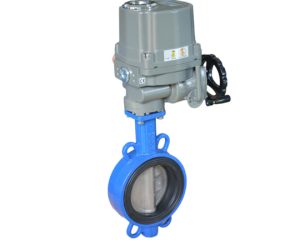
Summary of how KV value functions for specific valve types, such as a pneumatic control valve or globe valve.
KV value represents the flow rate through a valve at a specified pressure drop, making it critical for selecting and sizing specific valve types like pneumatic control valves and globe valves. It helps determine a valve’s capacity to meet system demands while maintaining efficient flow regulation. This ensures compatibility with operational requirements and adherence to performance standards.
Final tips for ensuring long-term performance and reliability through accurate metric selection.
Ensuring long-term performance and reliability begins with selecting the correct metric, such as KV or CV, based on the system’s regional standards and operational parameters. Regularly verify that the chosen metric aligns with the flow rate and pressure drop requirements. Periodic system checks and recalibrations maintain alignment between valve performance and operating conditions, preventing inefficiencies or wear.
FAQ KV Value
Q1. How does the KV value differ when comparing a pneumatic valve and an electric valve?
The KV value signifies the flow rate through a valve under a specified pressure drop. For a pneumatic valve and an electric valve, the KV value helps determine their flow capacity based on system needs. Pneumatic valves are often used for quicker response in dynamic systems, while electric valves provide precise control. Understanding the KV value for each type ensures proper integration and system compatibility.
Q2. Why is the KV value important for valve types like butterfly valves, gate valves, and flanged ball valves?
The KV value is crucial for these valve types as it defines their ability to handle flow rates under specific conditions. Butterfly valves are suited for large flow rates, while gate valves are ideal for on/off operations. Flanged ball valves, offering robust connections, rely on the KV value to ensure they meet system specifications efficiently. Selecting the right valve based on KV prevents operational mismatches.
Q3. How is the KV value used to size a ball valve for a specific application?
Sizing a ball valve involves determining the required flow rate and pressure drop in the system. The KV value quantifies the valve’s ability to maintain this flow. For example, whether choosing a standard ball valve or a flanged ball valve, the KV value ensures it meets performance demands and integrates seamlessly into systems, whether metric or imperial standards are applied.
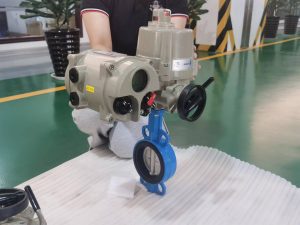
Conclusion KV Value
Choosing the right metric, whether CV or KV, is essential for aligning valve performance with system requirements. The KV value serves as a fundamental indicator when selecting and sizing various valve types, including a pneumatic ball valve or a 3 way ball valve, to ensure efficiency under operating conditions. For applications requiring precise control, such as those involving a pneumatic control valve or an electric ball valve, the KV value ensures accurate flow regulation and compatibility. Similarly, when working with a globe valve, understanding KV helps maintain reliable performance by matching the valve’s capacity to the system’s demands. A thorough understanding and application of KV values support long-term functionality and system efficiency across diverse valve implementations.

